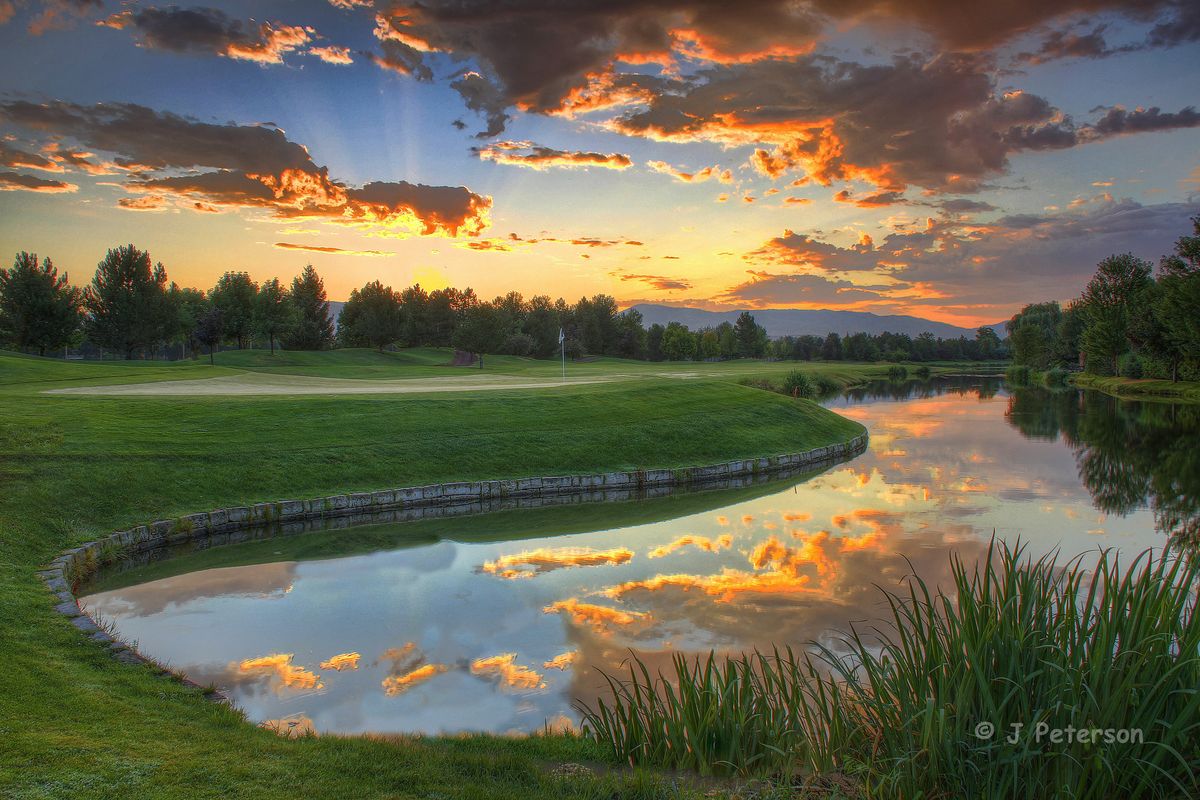Variety of gems all sparkle at BanBury GC in Eagle, Idaho
Beautiful BanBury challenges, thrills

It probably says a lot about BanBury’s layout and playability that I toured the last nine holes in a wind tunnel and still thoroughly enjoyed this challenging course in Eagle, on the outskirts of Boise.
The winds picked up considerably as I made the turn and, just my luck, the next four holes played into a stout breeze. It became a serious crosswind with debris skittering across the 14th, a tough 190-yard par 3. For some reason, my mood picked up on No. 15 with the wind at my back.
Yet the conditions really didn’t matter much. This 13-year-old, John Harbottle-designed course has plenty of variety to keep one’s attention from start to finish.
Water, in the form of streams, ponds and rivers, comes into play essentially from No. 8 to the clubhouse. The course is beautifully maintained and the holes weave seamlessly through the natural environment and a 105-home development.
“Most of the feedback I get is that it’s a players’ course,” pro Jerry Breaux said. “The player has to get on the right set of tee markers. Once in a while we’ll see newer players playing on the wrong set of tees so we help them with a recommendation. It’s not very forgiving for new players.”
Breaux said the design follows several of Harbottle’s tenets: punish- ing bunkers, an occasional short par 4 where 2s and 6s are possible, and greens shaped according to the challenge presented by each hole. Harbottle, a prominent designer of courses in the West, died last week at the age of 53.
“Hitting into a bunker, he definitely wants it to be a penalty,” Breaux said. “He likes character on the greens. If the hole dictates a long shot, there’s a bigger target. If it’s a shorter shot, there’s a little more character, more stuff on the greens. He wants the hard holes to be really hard and the easier ones to be fun to play.”
BanBury has hosted several prestigious events, including the 2005 U.S. girls junior tournament, the first USGA event held in Idaho. In-Kyung Kim won the tourney. Morgan Pressel, coming off a runner-up finish in the U.S. Open at age 17, made it to the semifinals. BanBury has been the site of several state amateurs and qualifying for the Nationwide Tour’s Boise Open.
This summer, the boys Junior America’s Cup will be contested at BanBury.
The front begins with two holes where the biggest key is a wisely placed approach. The first green is roughly 90-feet long but narrow, with numerous humps and bumps. If your distance or direction is a tad off, making par will be a chore. Same goes for the green on the par-5 second.
The last four holes of the side are some of the best on the course. No. 6 runs 427 yards to a plateau green, making four a prized score. Breaux counts No. 8 as one of his favorites. It can be played from 190 to 220 yards to a sizable but thin green, bordered on two sides by water. I set a ball on the back center and rolled it toward the front left pin location and it broke about 15 feet.
No. 9 was probably my favorite hole. It has length (400 yards), peril (water skirts the left side, trees and rough right) and a tricky green. The pin was about 8 feet from the back left edge and misses left of target will probably trickle down a shaved bank into a pond. Find the putting surface and you must deal with a series of undulations.
The back side has several gems. The fairway on the par-5 12th is divided by a hazard, forcing a player to try to fly it or lay up – a decision heavily influenced by wind conditions. Down the fairway, a swollen river had spilled over into the rough on the right side.
The par-3 14th is 249 yards from the tips. The par-3 16th is 155 yards, most of it over water. No. 17 is drivable for big hitters at 302 yards. Few attempt it, but Breaux recalled a college player launching a driver within 6 feet and missing the eagle putt.
I played the scenic par-5 18th at 505 yards, hit a solid drive and promptly dunked a 6-iron approach into a pond that borders the front of the green.
“Now that players are hitting the ball so far, it’s turned into a really good par 4,” Breaux said. “We had 150 college players here a few years ago and they played it as par 4.”